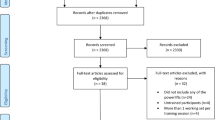Abstract
The aim of this study was to determine whether gait training using powered gait orthosis (PGO) improved gait function in paraplegics following spinal cord injury (SCI) and whether it suppressed related complications. Three complete SCI patients were used as case studies and put through four months of the gait training. The parameters of gait function—namely, velocity, step length, and cadence—were evaluated by three-dimensional motion analysis. The body fat mass (BFM) and the bone mineral density (BMD) of the femur were also measured. Velocity, cadence and step length were observed to significantly improve (p = 0.026, 0.039, 0.013, respectively) after four months of PGO gait training; furthermore, there were increments in all the subjects. BFM also significantly decreased (p = 0.004), but there was no significant change in body weight (p = 0.072), although a decrease was observed in all the subjects. Moreover, no significant change in BMD was observed (p = 0.221), although there was an increment in all the subjects. These results showed that gait training using PGO contributed to not only improving gait function in SCI patients but also suppressing increase in body fat mass and bone loss.
Similar content being viewed by others
References
Noreau, L., Proulx, P., Gagnon, L., Drolet, M., and Laramee, M. T., “Secondary impairments after spinal cord injury — a population-based study,” American Journal of Physical Medicine & Rehabilitation, Vol. 79, No. 6, pp. 526–535, 2000.
Model Systems Knowledge Translation Center, “Spinal cord injury and gait training,” http://www.msktc.org/lib/docs/Factsheets/SCI_Gait_Training.pdf (Accessed 27 June 2013)
Rosman, N. and Spira, E., “Paraplegic use of walking braces: a survey,” Archives of Physical Medicine and Rehabilitation, Vol. 55, No. 7, pp. 310–314, 1974.
Coghlan, J. K., Robinson, C. E., Newmarch, B., and Jackson, G., “Lower extremity bracing in paraplegia-a follow-up study,” Paraplegia, Vol. 18, No. 1, pp. 25–32, 1980.
Nightingale, E. J., Raymond, J., Middleton, J. W., Crosbie, J., and Davis, G. M., “Benefits of FES gait in a spinal cord injured population,” Spinal Cord, Vol. 45, No. 10, pp. 646–657, 2007.
Ruthenberg, B. J., Wasylewski, N. A., and Beard, J. E., “An experimental device for investigating the force and power requirements of a powered gait orthosis,” Journal of Rehabilitation Research & Development, Vol. 34, No. 2, pp. 203–213, 1997.
Ohta, Y., Yano, H., Suzuki, R., Yoshida, M., Kawashima, N., and Nakazawa, K., “A two-degree-of-freedom motor-powered gait orthosis for spinal cord injury patients,” Proc. of the Institution of Mechanical Engineers, Vol. 221, No. H6, pp. 629–639, 2007.
Kim, G., Kang, S., Kang, S., Ryu, J., Mun, M., and Kim, K., “Unlockable knee joint mechanism for powered gait orthosis,” Int. J. Precis. Eng. Manuf., Vol. 10, No. 3, pp. 83–89, 2009.
Rajan, S., McNeely, M. J., Warms, C., and Goldstein, B., “Clinical assessment and management of obesity in individuals with spinal cord injury: A review,” Journal of Spinal Cord Medicine, Vol. 31, No. 4, pp. 361–372, 2008.
Phillips, L., “Spinal cord injury: A guide for patient and family,” Raven Press, 1987.
Wajchenberg, B. L., “Subcutaneous and visceral adipose tissue: Their relation to the metabolic syndrome,” Endocrine Reviews, Vol. 21, No. 6, pp. 697–738, 2000.
Gesta, S., Tseng, Y. H., and Kahn, C. R., “Developmental origin of fat: Tracking obesity to its source,” Cell, Vol. 131, No. 2, pp. 242–256, 2007.
Klibanski, A., Campbell, L. A., Bassford, T., Blair, S. N., Boden, S. D., Dickersin, K., Gifford, D. R., Glasse, L., Goldring, S. R., Hruska, K., Johnson, S. R., McCauley, L. K., and Russell, W. E., “Osteoporosis prevention, diagnosis, and therapy,” JAMA-The Journal of the American Medical Association, Vol. 285, No. 6, pp. 785–795, 2001.
Tosteson, A. N. A., Melton, L. J., Hughes, B. D., Baim, S., Favus, M. J., Khosla, S., and Lindsay, R. L., “Cost-effective osteoporosis treatment thresholds: The united states perspective,” Osteoporosis International, Vol. 19, No. 4, pp. 437–447, 2008.
Klute, G. K., Czerniecki, J. M., and Hannaford, B., “Mckibben artificial muscles: Pneumatic actuators with biomechanical intelligence,” Proc. of IEEE/ASME International Conference on Advanced Intelligent Mechatronics, pp. 221–226, 1999.
Arazpour, M., Chitsazan, A., Hutchins, S.W., Mousavi, M. E., Takamjani, E. E., Ghomshe, F. T., Aminian, G., Rahgozar, M., and Bani, M. A., “Evaluation of a novel powered gait orthosis for walking by a spinal cord injury patient,” Prosthetics and Orthotics International, Vol. 36, No. 2, pp. 239–246, 2012.
Ko, C. Y., Hyun Seo, D., and Sung Kim, H., “Deterioration of bone quality in the tibia and fibula in growing mice during skeletal unloading: Gender-related differences,” Journal of Biomechanical Engineering, Vol. 133, No. 11, pp. 111003, 2011.
Ko, C. Y., Jung, Y., Seo, D., Schreiber, J., Lim, D., and Kim, H., “Trabecular bone loss in lumbar vertebrae and tibiae following sciatic nerve injury: Correlation between baseline bone quantity (BV/TV) and the magnitude and rate of bone loss,” Int. J. Precis. Eng. Manuf., Vol. 13, No. 9, pp. 1705–1708, 2012.
Author information
Authors and Affiliations
Corresponding author
Rights and permissions
About this article
Cite this article
Kim, G., Kang, S., Cho, K.H. et al. A preliminary study of the effects of gait training using powered gait orthosis for paraplegics: Aspects of gait function, fat mass, and bone mass. Int. J. Precis. Eng. Manuf. 14, 1855–1859 (2013). https://doi.org/10.1007/s12541-013-0248-y
Received:
Accepted:
Published:
Issue Date:
DOI: https://doi.org/10.1007/s12541-013-0248-y




